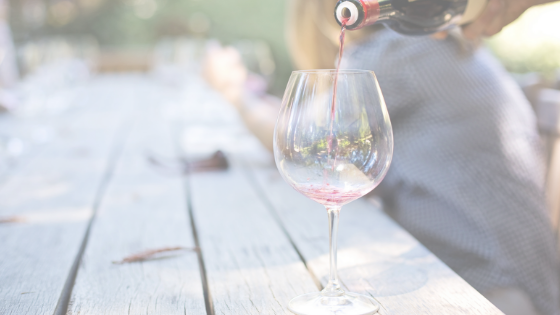Whether you’re just getting into wine or you’re trying to impress, there are five terms you need to know first and foremost. Trust us, wine will make a lot more sense, and get a lot more interesting once you understand these basics.
1. Terroir
A French word pronounced “tehr-wahr”, the terroir refers to the surrounding climate where grapes are grown. It includes a number of factors like soil, sunlight, farming practices, weather and more, which all contribute to the flavors, aromas and complexity you get in each wine. This means two winemakers could be making a chardonnay with the exact same process on different sides of the world and the wines will taste different.
For example, a soil that incorporates fossilized sea shells might produce a grape that gives off minerality, high acidity and even tasting notes of oysters.

2. Appellation
The Merriam-Webster definition of appellation is a geographical name under which a winegrower is authorized to identify and market wine.
Many of the highest-level sommeliers out there (there aren’t many) can sniff a wine and tell you what appellation it comes from. You can search an encyclopedia of the thousands of wine regions around the world.
3. Legs
Take the surface of your glass and draw quick circles with it on the table, so that your wine swishes around the glass. See the droplets coming down in streaks along the inside of the glass? Don’t see them? Where is your wine? What is wrong with you? Get pouring.
Those streaks are called legs and they indicate whether the wine has a high alcohol content or high sugar content. Sweeter wines with higher sugar content will have denser, more viscous legs that will drop back down slowly. If you see a lot of legs, it is likely the wine has higher alcohol content.
4. Tannins
As long as you are a wine drinker, I promise you will encounter the term tannins many times. A tannin is not an actual ingredient, but it is an element which gives a wine its dry and bitter taste.
Tannins give you a dry feeling on your tongue and the inside of your cheeks. It is similar to the feeling you might get when biting into dark chocolate, eating the skin of a grape or sipping unsweetened black tea. They are mostly found in reds because reds incorporate more of the grape’s skin and stem.
Tannins can also be created from wood. Wines aged in oak barrels would typically have more tannins than wine made in steel barrels.
5. Diacetyl
By now, you’re learning that most of what you taste in wine comes from elements and chemical compounds, and not actual ingredients being smashed into your wine along with the grapes. You didn’t think there was actual grass in your New Zealand Sauvignon Blanc, did you?
Diacetyl is a chemical compound that mimics the buttery flavor you taste in your chardonnays. It actually the same chemical compound that is in your movie theatre buttered popcorn and it gives your chardonnay its slightly yellow tint.

Congratulations! Now you already know more about wine than most of the general population. Go take your knowledge to your next wine tasting and impress your friends. Just don’t be a snob about it.



